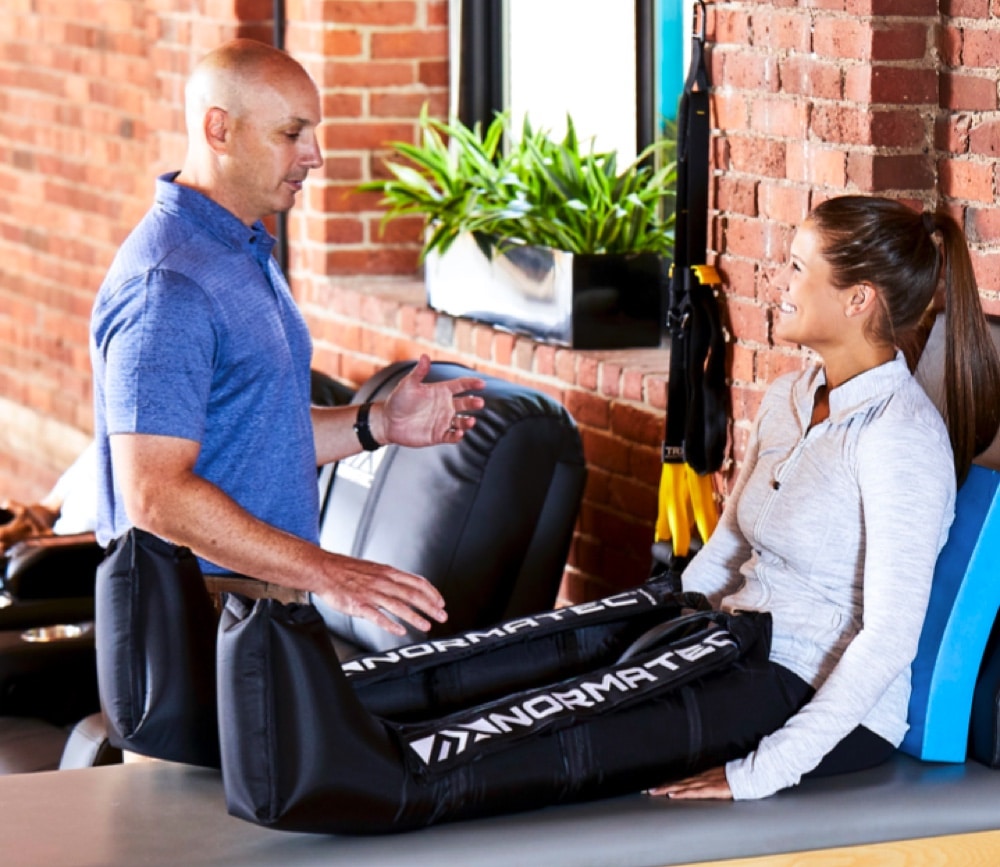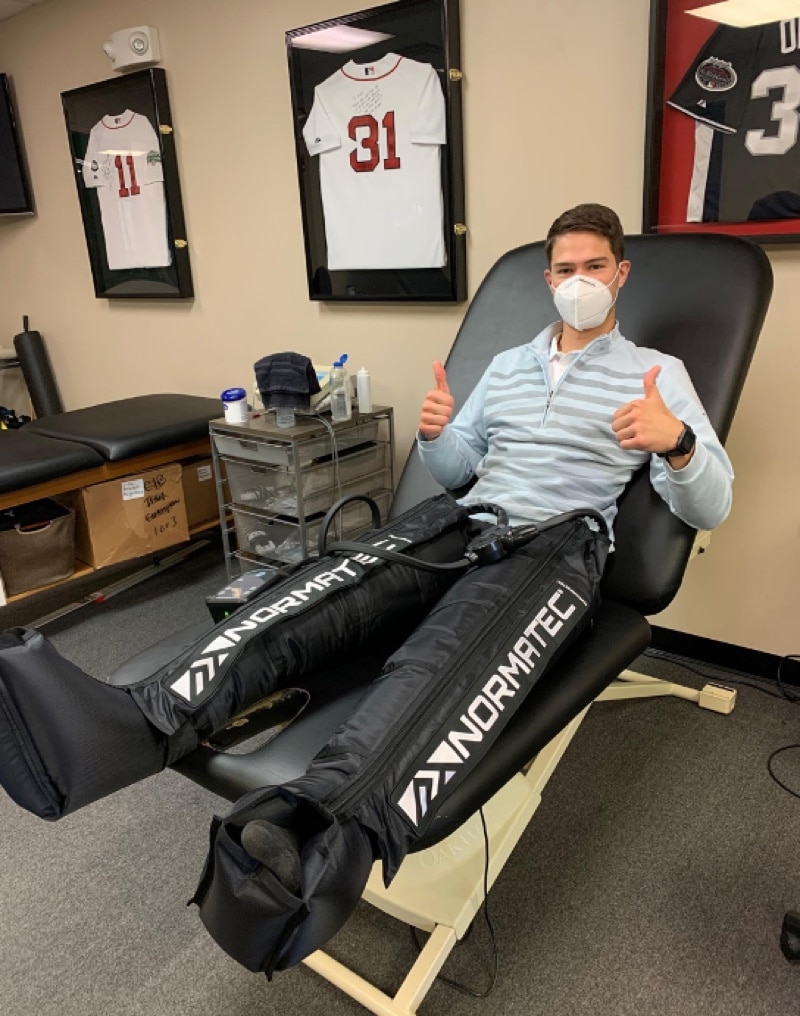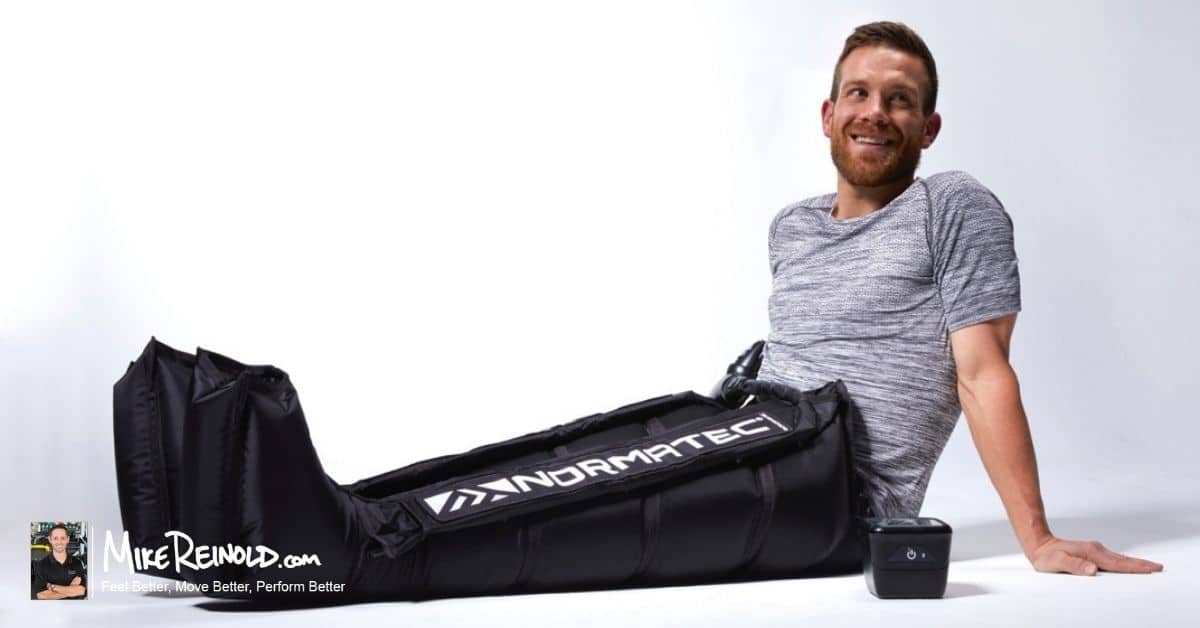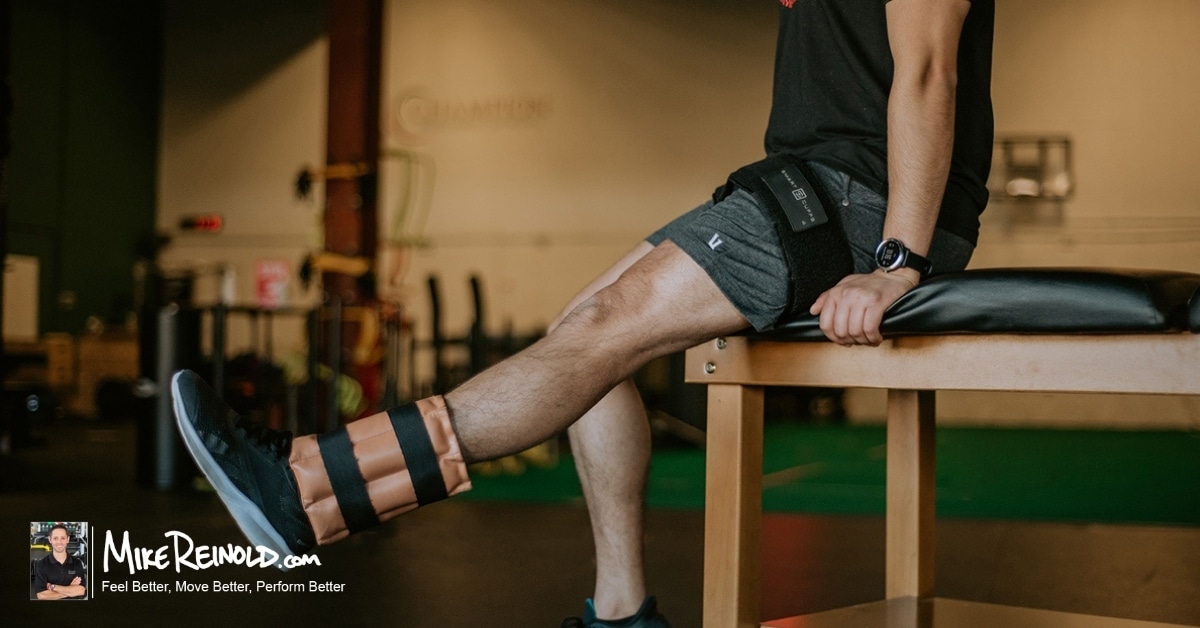Recovery may be the biggest trend in fitness and sports performance. It’s not uncommon to experience muscle soreness or tension following intense training or the initiation of a new exercise regime.
Some soreness can be good, and even necessary, if you or your client have the goal of inducing muscle hypertrophy and increasing strength and performance.
But soreness that lingers can have a negative impact on subsequent workouts, games, and practices. Finding ways to promote recovery and minimize time spent in a phase of muscle deterioration is critical for high-level athletes, or anyone looking to optimize their performance and training.
One of the more popular methods of enhancing recovery is compression therapy.
In this article, we’re going to take a look at the efficacy of compression therapy using Normatec by Hyperice, a fairly new phenomenon that many athletes and those in fitness are excited about as a means to achieving this goal.
How does Normatec Compression Therapy Work?
Normatec compression boots extend from the toes to the top of the femur and also have attachments for the hips, lower back, and arms. Each boot has five chambers that fill with air working in a distal to proximal sequence.
This setup is meant to assist the function and sequence with which our veins, musculature, and lymphatic system work. The goal is to clear deoxygenated blood and metabolic waste centrally to be filtered and re-oxygenated by the central organs.
Normatec does this by compressing different portions of the extremity in a sequential manner.

This is meant to create an environment favorable to a quicker recovery, as well as several proposed benefits:
- Reduction in swelling
- Improved tissue perfusion
- Increase in total hemoglobin and oxygenated hemoglobin in muscle
- Improved range of motion
- Decrease in pain pressure threshold
- Decreased muscle fatigue
- Promotes relaxation
What Does the Research Say?
There seems to be enough evidence to support the theory that Normatec significantly helps reduce blood lactate levels following short bursts of high intensity exercise.
In a study of 21 D1 female athletes at Northeastern University, it was found that Normatec compression was comparable to forms of active recovery, and significantly more effective than passive recovery, in clearing blood lactate following a one-minute all-out sprint on a bicycle. In this study, passive recovery meant sitting stationary, while active recovery meant easy bike riding at 40% HRR.
Findings included:
- Mean blood lactate pre-bike ride: 1.70 mM/L
- Mean blood lactate immediately post bike ride: 9.94 mM/L
- Post recovery blood lactate measurements
- Passive recovery = 12.61 mM/L
- Active Recovery = 7.49 mM/L
- Normatec Recovery = 8.38 mM/L
Normatec and active recovery were effective in reducing blood lactate levels, while those who underwent passive recovery experienced a further increase in blood lactate levels.
I would be curious to see a fourth group where blood lactate measurements were taken in a group who partakes in a short 40% HRR bike ride followed by Normatec. I would guess that blood lactate levels would be even lower than active recovery or Normatec alone.
Nonetheless, this study strongly suggests that compression therapy is an appropriate means to help reduce blood lactate levels, and possibly help reduce fatigue and soreness, following a workout.
Further benefits on the cellular level include an increase in oxygenated and total hemoglobin levels following use of Normatec compression boots.
One study examined hemoglobin levels before and after the use of Normatec compression and they found a 42% increase in oxygenated hemoglobin and a 138% increase in total hemoglobin for the intervention group in comparison to the control group.
The authors of the study propose that this is primarily beneficial because Normatec helps to bring an influx of oxygen, nutrients, and proteins to the cells, which helps promote healing and recovery. This likely occurs due to compression causing the endothelial cells to stretch, which triggers a release of nitric oxide resulting in dilation of blood vessels.
In a different study, Weiner et al demonstrated a mean power frequency significantly higher under EMG analysis in the tibialis anterior following Normatec use in comparison to the contralateral leg acting as the control and not receiving Normatec. The power output of the tibialis anterior was compared to a pre-test measurement following fatigue of the dorsiflexors by maintaining suspension of a 10 kg weight around the foot. These same results were found regardless of which leg underwent compression as a form of recovery in follow-up trials.
The authors theorized that the improved performance was due to an increase in perfusion to local tissue following the use of Normatec. Regardless, this is evidence that Normatec can be a useful tool to help athletes maintain desired muscle function and prevent excessive fatigue following strenuous workouts.
Finally, two studies performed by Sands et al, demonstrated observable improvements in both increasing range of motion and decreasing pain pressure threshold following the use of Normatec.
In the first study, Dr. Sands and the authors explain that the US Olympic Training Center received Normatec compression boots as a donation. Interestingly, many of the athletes stated that they were experiencing noticeable, rapid increases in range of motion after sessions with Normatec.
From there, they decided to design a formal study with nine college-age female dancers who are accustomed to being in positions of extreme range of motion. The anecdotal claims were confirmed in the research results. The dancers gained notable increases in motion in the forward split position following the use of Normatec in comparison to the control.
The authors discuss how these findings likely are best explained by the result of neuroalteration, and not a change in muscle quality or muscle length. This is a good reminder that there are several ways to help athletes achieve increased mobility besides static and dynamic stretching and this can be especially helpful for athletes who need increased end range motion, such as gymnasts, dancers, or ice hockey goaltenders.
This study also suggests that Normatec can be a useful adjunct in a physical therapy clinic for clients who may struggle with movements like a hinge or squat due to decreased mobility. Starting a session with Normatec may be helpful to gain range and successfully move through these major movement patterns.

The second study by Sands demonstrated a decrease in muscle soreness, demonstrated by a decrease in pain pressure threshold, following the use of Normatec in comparison to pre-test measurements and the control. The authors discussed how early stages of edema after muscle microtrauma from exercise results in decreased tissue clearance due to the magnitude of extracellular fluid and the compromised status of the lymphatic vessels. The authors further theorized that compression therapy helps assist the vessels and lymphatic system clear out extracellular waste following exercise.
Summary
There seems to be enough research to suggest that Normatec is a legitimate adjunct to help athletes accelerate and enhance recovery in the days following a tough workout or strenuous activity.
Besides the metabolic and physiological benefits discussed, Normatec at its least is a helpful tool to help athletes relax and calm the nervous system or reduce muscular tone, which can lead to observable beneficial outcomes like increased range of motion and power output.
About the Author
Andrew Stec, DPT, is currently a physical therapist from Grand Rapids, MI. He performed a clinical rotation with us at Champion PT and Performance.






